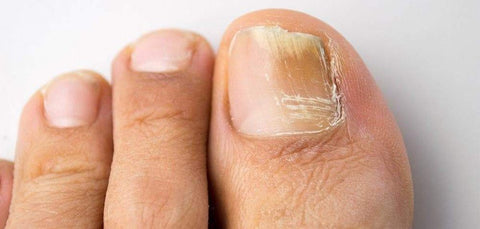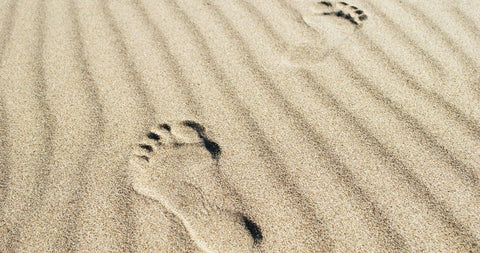
How to Get Rid of Toenail Fungus
Fungal nail infections occur when spores of a fungus make their way between your toenail and the skin underneath (the nail bed), and feed off of the skin or the keratin in the nail.1,2 If you get a fungal nail infection you might notice your nails are thicker, slightly discoloured, and may even be starting to separate from the nail bed.1,2
Spotting a fungal nail infection1,2
Here are some signs of fungal nail infection to look out for:
- Your nails start to look dull, and lose their natural shine
- There is discolouration around the edge of the nail
- White or yellowish spots in the middle of the nail
- A thickening or brittleness of the nail
- The nail crumbling and splitting, and even separating from the skin
- Discomfort while wearing shoes, walking, or standing for a time
It’s important to act quickly if you notice any of these symptoms. If you don’t treat the infection, there is a chance it will spread to other nails.
How to treat a fungal nail infection
Unless it’s an extreme case, most nail infections can be treated at home with a dedicated product like Scholl Fungal Nail Treatment – and a little bit of patience.
Here’s what you need to do:
- Use the hygienic disposable files to remove the top layer of the nail and improve its appearance
- File your nail once a week and apply the liquid once a day, for the first four weeks
- Continue to apply the liquid once a week for up to 9 months
- The files are disposable and can only be used once to avoid reinfection
- Once the infection has disappeared remember to give your feet the daily care they deserve

How to reduce the risk of a fungal nail infection
There are some simple things you can do to reduce the risk of a nail infection. Firstly, try to avoid humid or damp conditions in your shoes as fungus thrives in these conditions.1,2 If you use communal showers or swimming pools, wear foot protection such as flip flops.1,2
The older your shoes are, the more likely there will be fungus spores lurking. So, if your footwear is looking a bit tired, it could be the perfect excuse for a bit of shoe shopping.1,2
If you notice any damage to your nails this can give fungus the chance to get into and under the nail, where it feeds off of the keratin. So, it’s important to keep the damaged area extra clean and dry.1,2
Notice any symptoms of athlete’s foot? Then treat this as soon as you can, as this can easily spread to your nails, becoming a fungal nail infection, which is harder to treat.
RB-M-03253. Always read the instructions



